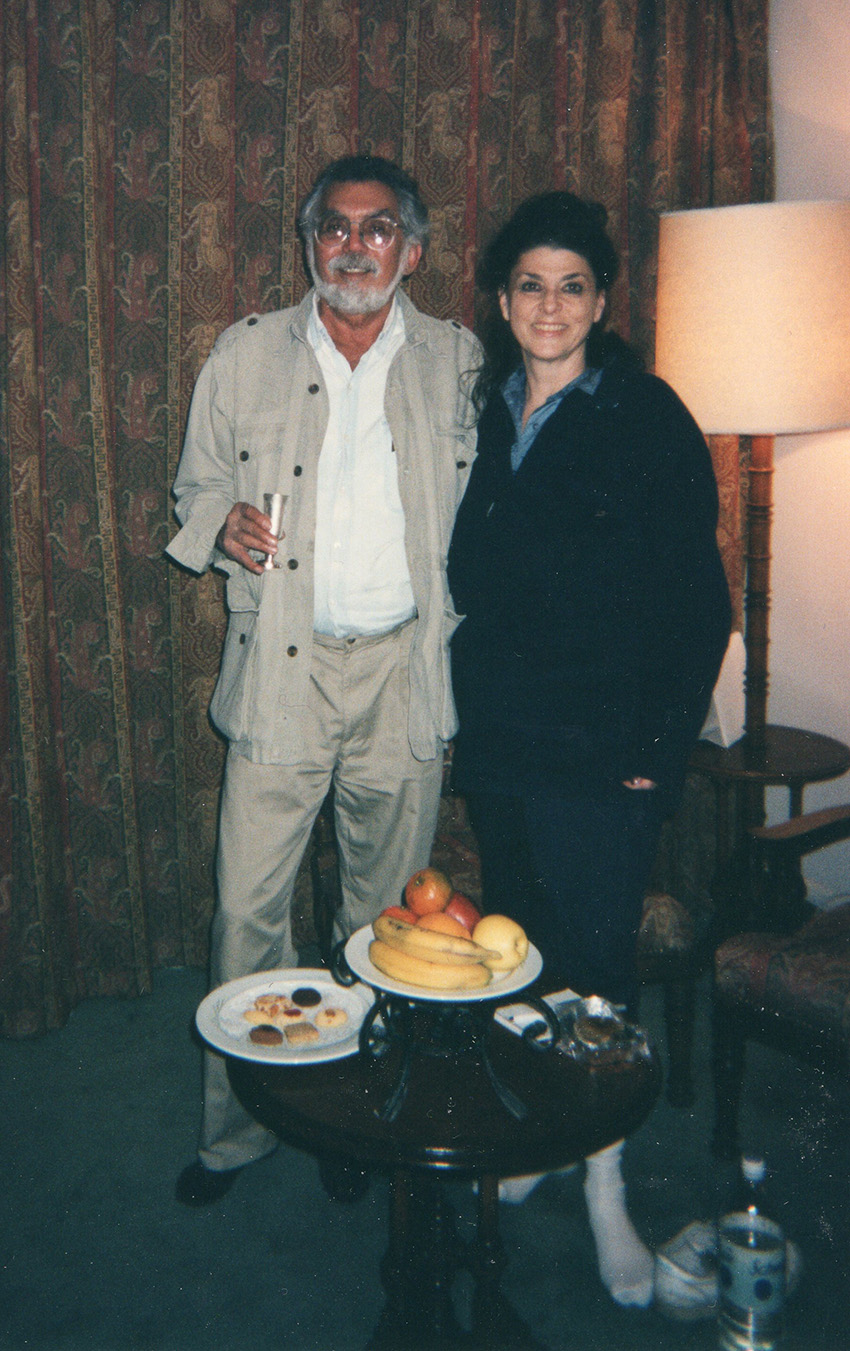
The Great Sphinx is one of the world's largest and oldest statues, yet basic facts about it such as the real-life model for the face, when it was built, and by whom, are debated. These questions have collectively earned the title "Riddle of the Sphinx", a nod to its Greek namesake, although this phrase should not be confused with the original Greek legend.
In recent years professor Robert M. Schoch of Boston University and Colin Reader have speculated that the Sphinx may display evidence of prolonged water erosion. Egypt's last time period where there was a significant amount of rainfall ended during the 3rd millennium BC. Shoch claims that the amount of water erosion they feel that the Sphinx has experienced indicates a construction date no later than the 6th millennium BC or 5th millennium BC, at least two thousand years before the widely accepted construction date and 1500 years prior to the accepted date for the beginning of Egyptian civilization. Reader's assessment is that the Sphinx is a few hundred years older than the traditionally accepted date.
This theory has not been accepted by mainstream Egyptologists or experts in related fields. Alternative theories for the erosion include wind and sand, acid rain, exfoliation or the poor quality of the limestone used to construct the Sphinx. Read more

I met researcher and author John Anthony West in Egypt in December 2000. His theories about the age of the Sphinx are based on the weathering of the Sphinx's body dues to water erosion making it much older than is recorded.
In a series of expeditions between 1991 and 1993 led by John Anthony West, scientific investigators conducted geological and seismic surveys around the Great Sphinx of Egypt along with other researchers. The team's conclusion: The pattern of erosion on the Sphinx indicates that it was carved at the end of the last Ice Age, when heavy rains fell on the eastern Sahara - perhaps more than 12,000 years ago. This contrasts starkly with the 'orthodox' Egyptological dating for the Sphinx of around 4,500 years ago.
Seismography: The seismic survery indicated the existence of several unexplored tunnels and cavities in the bedrock beneath the Sphinx, including a large rectangluar chamber at a depth of some 25 feet beneath the monument's front paws. This film linked the Sphinx to Atlantis and suggested that the chamber beneath the paws might contain the legendary 'Hall of Records' of Atlantis.
Dr. Zahi Hawass does not agree stating that there is no scientific proof to these claims. "The Sphinx is the soul of Egypt."
One well-publicized debate was generated by the works of two writers, Graham Hancock and Robert Bauval, in a series of separate and collaborative publications from the late 1980s onwards. Their claims include that the Great Sphinx was constructed in 10,500 BC; that its lion-shape is a definitive reference to the constellation of Leo; and that the layout and orientation of the Sphinx, the Giza pyramid complex and the Nile River is an accurate reflection or "map" of the constellations of Leo, Orion (specifically, Orion's Belt) and the Milky Way, respectively.
Their initial claims regarding the alignment of the Giza pyramids with Orion ("... the three pyramids were an unbelievably precise terrestrial map of the three stars of Orion's belt"- Hancock's Fingerprints of the Gods, 1995, p.375) are later joined with speculation about the age of the Sphinx (Hancock and Bauval, Keeper of Genesis, published 1997 in the U.S. as The Message of the Sphinx). By 1998's The Mars Mystery, they claim:
Horakthi - Horus-of-the-horizon is referenced in the pyramid texts.
In the New Kingdom, around 1550 BC, the sphinx was known as 'Hor-em-akht', 'Horus in the Horizon', 'Place of Horus'. Horus, originally a sky god, whose eyes were the sun and the moon, was often depicted as a falcon-headed man. He was revered as the protector of Kings.
It is said that the pharaoh, the Horus-king, is to identify himself with the solar disc and that he is to make a journey on the ground by following a map in the heavens. Computer simulations confirm these alignments.
The texts tell the pharaoh identifies himself with the solar disc. [Sun - Source of Light or Creation]
He placed himself on the riverbed of the Winding Waterway 70 days before the summer solstice. He is then to make a journey of 70 days in which he will be carried across "the Winding Waterway", finally to be united with or fused with Horakthi, Horus-of-the-horizon. Seventy days before the summer solstice in 2,500 BC, the sun or Pharaoh, was exactly west of the Milky Way, the riverbed of the Winding Waterway. [Winding Waterway - Sea of Creation - DNA - Spirals of Time and Consciousness]
This ceremony took the Pharaoh to a place between the front paws of the Sphinx on the summer solstice in 2,500 BC and that this was an important lead in the search for the secret of the First Time, the Zep Tepi, or the Shining Ones - the Gods who roamed the Earth before the Pharaohs and immortality.
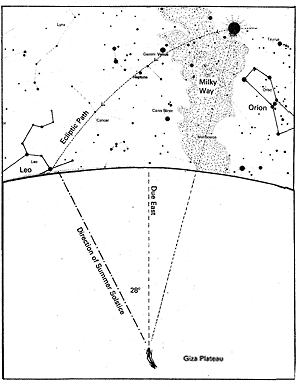
Seventy days later, one finds that the Sun or Pharaoh - has passed the Milky Way and is between the front paws of the constellation Leo.
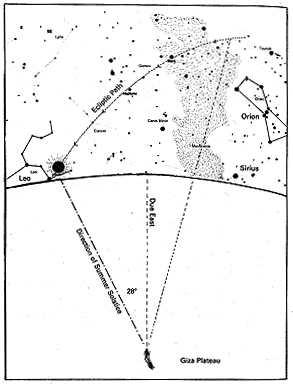
'Horakthiis' is the name the ancient Egyptians had for the constellation Leo. If Horakthiis also a name for the Sphinx, and the Sphinx is called Hor-em-Akhetas well, then it means that the Sphinx is the earthly counterpart of the constellation Leo, its perfect reflection, located in the earthly horizon at Giza.
The Sphinx is oriented exactly to the east, to the point where the sun rises on the spring equinox (the time of year when day and night are the same length, which falls on March 21), and not to the point where the sun rises on the summer solstice. This means that when the Pharaoh stood there at dawn, looking due east, on the summer solstice in 2,500 BC, he did not see the Sphinx's celestial counterpart, the constellation Leo, rising directly in front of him; instead, it was coming over the horizon 28 north of east.
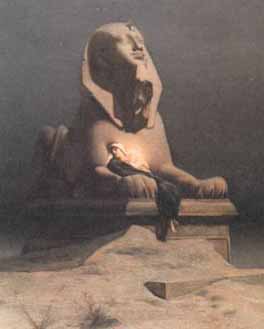
If we go back to the time before the birth of Christ, we see that the sun had then begun to rise in Pisces. Hancock believes that this is one of the reasons the early Christians represented Jesus as a fish.
If we go further back, to Tutankamon's time, the sun was rising in Aries, and that is why rams are such a common motif in that age, he says.
If we go back to 2,500 BC when the Sphinx is said to have been built, we see that the sun is rising in Taurus on the spring equinox.
The Sphinx marks the spring equinox. This place is based and founded on astronomical knowledge.
Hancock believes that we have to find the epoch or heaven when the sun was in Leo on the spring equinox, as was an initiation in ancient Egypt.
The point in time when the sun is in Leo on the spring equinox is the year 10,500 BC. As I see it, it really is that everything about this place points to just that time period. It is also the period signaled by the three pyramids at Giza.
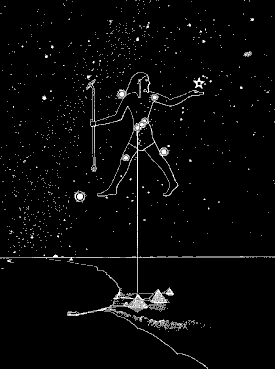
The reflection between the ground and the sky begins functioning a good month before the spring equinox, a period of time that falls between the winter solstice on December 21 and the spring equinox on March 21. This is indicated by the so-called causeway that goes from the Great Pyramid and points straight at the sunrise at the above moment at the same time the Sphinx is looking directly at Leo.
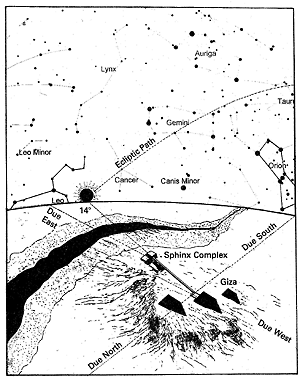
Hancock and Bauval are sure that all of this is no coincidence based on visible celestial alignments directly south at sunrise on the spring equinox in 10,500 BC. Precisely at the moment the sun disc is rising over the horizon, the three stars in Orion's belt are crossing the meridian in the south, exhibiting in the sky at that moment the pattern that the three pyramids at Giza have.
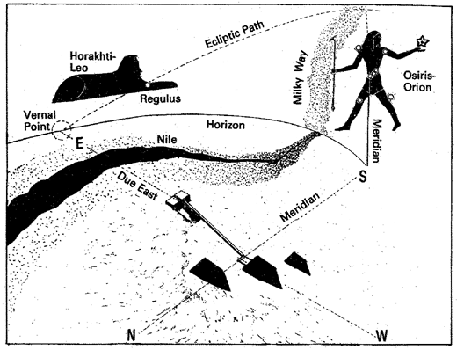
The whole region from Leo to Orion is the part of the sky that the ancient Egyptians called the Duat, the underworld, chaos, place of creation. It was there the soul traveled after death and of which it must have knowledge before death.
These monuments at Giza are perhaps built for remembering and representing that First Time, Zep Tepi, when the gods walked the Earth and were carrying with them a great secret concerning the mystery and meaning of life -- Creation as a consciousness program created by the spiraling patterns of sacred geometry -- 12 around 1.
More metaphors from the geometry of the grid program ...

I lectured with scholar Zecharia Sitchen at NYU and made a radio appearance with him in the 1990's. Sitchen's information links with the ancient civilization Sumer and metaphoric Nibiru.
In Zecharia Sitchin's book, The Wars Of Gods And Men, he gives his interpretation of ancient texts which strongly suggest that there was an actual war involving gods around 9000 BC. It ended in a peace treaty of sorts between factions of En.lil and En.kiKi, rival half-brothers.
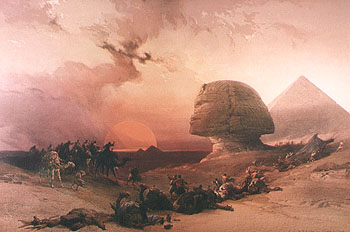
Sitchin says that these gods and goddesses were the political, military, and scientific leaders of The Anunnaki on Earth. They were apparently humanoid. We are descended from them, in-combination-with some indigenous hominoid genes (Neanderthal, according to Lloyd Pye's opinion and research) or else in-combination-with some 'hominid' genes (Homo Erectus, according to Sitchin's opinion and research). Genetic engineering by The Anunnaki, accounts for the so-called unexplained missing link in the Darwin's Theory of the Evolution of humans.
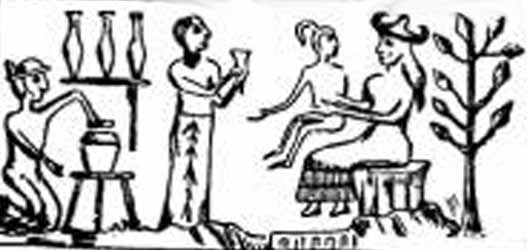
Sitchin writes that the Great Sphinx was designed and precisely located in terms of exact latitude and longitude, by the Anunnaki. On page 181 of The Wars Of Gods And Men he shows a diagram of a 'layout' involving the general area of Giza/Sinai/Israel/Lebanon.
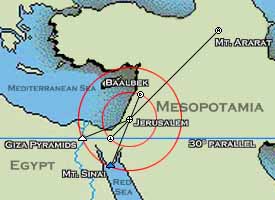
If you look at this layout, you will notice a dotted line drawn from Giza to where Sitchin thinks the Anunnaki had spaceport facilities in the Sinai.
Sitchin says these spaceport were completely destroyed by thermonuclear weapons around 2024 B.C. He backs-up this statement, as always, with compelling evidence from ancient texts, plus tangible modern empirical facts.
If the relationship of the face on Mars is analyzed for its distance to other pyramidal structures also discovered on Mars, the geometric relationship is found to be identical to the distances of the Egyptian Sphinx and the pyramids in the surrounding areas of Egypt. Sitchin concluded the placement of these pyramids indicates that they served as landing markers for the Nibiruans after they entered the Earth's atmosphere from outer space.
Sitchin also has asserted that the early pyramids were not designed by the Egyptians. NBC-TV aired a program on Nov.10, 1993 entitled "The Mystery of the Sphinx", indicating that the Sphinx is 2,000 years older than previously thought. This corroborated Sitchin's findings that someone other than the Egyptians designed the Sphinx and Great Pyramid.